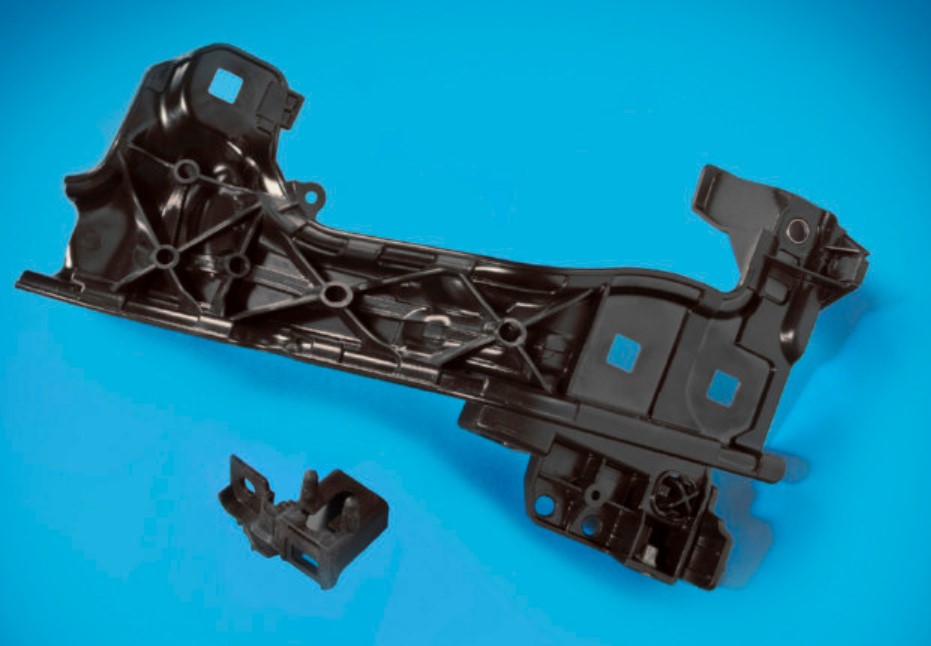Injection molding (IM) is considered the mainstream technology in the world’s manufacturing industry, with more than 30% of the world’s products being manufactured using injection molding technology. Due to the expensive equipment, it is usually applied to mass production of plastic parts based on economies of scale – the more parts, the lower the unit cost. Other advantages of injection molding include high tolerances, repeatability, a wide range of material choices, low labor costs and standard post-processing. However, injection molding (IM) also has its limitations, such as its preference for manufacturing parts with relatively simple forms and geometries. We have prepared a complete picture and introductory information about injection molding for you.

What is injection molding?
As early as 1872, brothers John and Isaiah Hyatt patented the injection molding technology. However, the “golden age” of injection molding (IM) was after the middle of the 20th century, that is, after World War II. Due to the high demand for cheap, mass-produced parts, injection molding became a good choice because it could produce a large number of parts on the one hand, and the relatively low cost of mass production on the other hand.
How does injection molding work?
Simply put, it can be seen as making cookies using a cookie mold, with molten plastic or other liquid material as the dough. You can see the detailed process in the video below: First, the material pellets are melted and then pressed through a spiral cylinder. Then, it is injected into a metal mold, and after cooling and solidification, the product is obtained from the mold with almost no post-processing required.
What is injection molding used for?
Injection molding (IM) technology is mainly used to make plastic parts. In fact, almost one-third of the objects you can see around you are made using injection molding technology: device housings, boxes, office supplies, cups, etc.
Disadvantages of Injection Molding
Disadvantages of Injection Molding
Injection molding (IM) has many advantages, but it also has some disadvantages. First, expensive tools and frequent test prototypes are required to avoid problems during the manufacturing process. And because of the requirements of the injection molding process, it is only suitable for manufacturing objects with regular (uniform) wall thickness. In addition, the size of the final part is limited by the size of the mold, and some large objects cannot be produced with a single mold.

Types of Injection Molding
There are many different types of injection molding, each with its own advantages and disadvantages.
Here are the general types:
Rotational molding – With this technique, the material is placed in a mold and slowly rotated over a heated furnace. The material begins to melt and adheres to the inner surface of the mold, forming the object layer by layer. Rotomolding allows a variety of simple to complex shapes, such as industrial tanks, to be made without the need for bonding or welding.
Extrusion – This method involves forcing molten material (usually plastic) into a two-dimensional die cavity. It passes through a series of dies, where it melts and takes its shape. When the product is ready, it forms a long two-dimensional shape that can be cut into multiple parts.
Metal injection molding – A metalworking process. After the block is formed from metal powder and a binding material, it is formed and cured using injection molding technology, and then the part is post-processed at high temperatures. Finally, the binder is removed and the powder is sintered to obtain the product.
Reaction injection molding (RIM) – Using thermosetting polymers instead of plastics, after being pressed inside the mold, the block is mixed with a catalyst and then left to cure. The most common reaction injection molding material is polyurethane.
Liquid Silicone Injection Molding – Very similar to Reaction Injection Molding (RIM): Liquid silicone (rubber) is injected into the mold and then cured. This technique can be used to evaluate different material configurations before full-scale production.
Materials for Injection Molding
There are thousands of materials used for injection molding, consisting primarily of various polymers and plastics (some thermoplastics and elastomers).
All materials produce a very low viscosity melt that quickly fills complex mold cavities at low injection pressures. Combined with low injection pressures, this minimizes the possibility of producing highly stressed parts. Commonly used injection molding materials include:
ABS
Polyethylene
Polyurethane
Polycarbonate
Polypropylene
Nylon (Polyamide)
